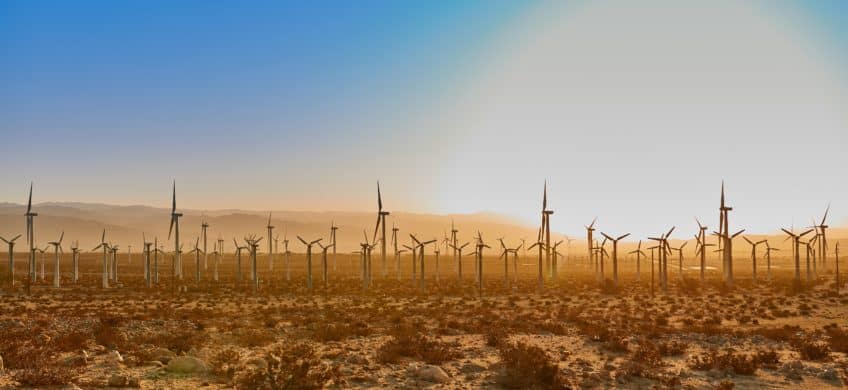Anciently Israel was commanded of God concerning the pagan practices of the inhabitants of the Promised Land, “But you shall destroy their altars, break their images, and cut down their groves: For thou shalt worship no other god: for the LORD, whose name is Jealous, is a jealous God.” Ex. 34:13-14
Much later, after the death of Solomon Israel split in two to become the House of Israel (the ten northern tribes) and the House of Judah centered around Jerusalem.
Of the House of Israel, we find “For the LORD shall smite Israel, as a reed is shaken in the water, and He shall root up Israel out of this good land, which he gave to their fathers, and shall scatter them beyond the river, because they have made their groves, provoking the LORD to anger,” I Kings 14:15.
And of the House of Judah, “And Judah did evil in the sight of the LORD, and they provoked Him to jealousy with their sins… they also built them high places, and images, and groves, on every high hill, and under every green tree…” I Kings 14:22-23
The groves that caused Israel and Judah such trouble were actually Asherah, images of the idol goddess Ashtereth (Astarte, Ishtar, Easter). These groves of idols were erected in the high places and under green trees. They could be cut down. And when righteous kings ruled in Israel and Judah they were often cut down.
The term “grove” can also mean a stand of trees. And in this post-modern world it might just stretch to describe the relatively new phenomena festooning the high places of modern Israel (if you know who modern Israel is–read our free book Europe and America in Prophecy) otherwise known as the “wind farm.” Towering clusters of spindly windmills littering the hills and ridge lines (the high places) of many previously scenic rural views (and even ocean views).
In modern Israel, and so many other countries, these “groves” of windmills share something in common with ancient Asherah (groves) in that like the latter they have become idols for many who adhere to the new age religion called human induced global warming, or climate change. To some they are a kind of savior of the world as they see it, producing “green” renewable energy, eliminating CO2 as a by-product of power production (don’t talk about the copious CO2 produced manufacturing the windmills and solar panels), and thus saving the world from disaster, even destruction, from excessive warming and ocean rise caused by–they claim–that poisonous, toxic gas, CO2. (Someone should tell the plant world!)
But those who put their faith in idols invariably come to grief.
Crisis, What Crisis?
As we should all know–because for the past thirty years and more it has been drummed into us by the media, by scientists, many of whom are invested in “climate change” as a living and many who have no expertise in climate at all, by global warming alarmists (usually lacking any scientific expertise in climate), by governments (who follow the prevailing breeze), by schools (essentially ignorant teachers teaching ignorant but pliable students the party line) and the United Nations (enough said)–the world stands on the precipice of devastating cataclysm due to humans pumping untold vast quantities of CO2 into the atmosphere above and beyond the Earth’s natural processes (about 3% above natural causation). The impact of the sun and other natural factors leading to a slightly warming Earth are, according to the acolytes of this “climate change” religious movement, of little or no consequence.
Now of course, it is not true “we all know” that humans are responsible for global warming, also known as “climate change.” No matter how hard the true believers drum that belief into the rest of us. True believers? Yes, there are those who truly believe that humans are the cause of “global warming.” In fact, they adhere to their belief, embellished with various doctrines and dogma, much the same as a zealous religious person might. But there remain skeptics, thankfully. The skeptics of this latter-day religion are still labeled with the epithet, “Denier,” spat out with appropriate venom.
March for What?
Recently, on 22 April 2017, a “March for Science” was organized on a worldwide basis. The idea for a march originated in the USA on the back of the so called “March for Women” that might just as easily, and more honestly, have been called, “The March Against Trump.”
Essentially, on the surface, these marches for science seem to have been organized to protest cuts to government research budgets. Certainly in the USA and in Australia recent government decisions have cut budgets for science. But at a time of incredible indebtedness of governments (U.S. $20 trillion, Australia approaching $500 billion) cuts are occurring across government programs. It’s hard to see why science should escape austerity. However, when the areas of major cuts in science are examined it seems much of it falls on research into “climate change” or areas devoted to implementing climate policy.
In Australia an organization called “March for Science, Australia” sprang up with a website to announce this “global event bringing together people of all walks of life who believe we need more evidence and reason in our political process.” This explanation for the march probably points to it being more about politics than science, especially the politics of funding for science.
The same website provided the additional rationale for the march: demands for universal literacy, open communication (of publicly funded scientific findings), policy informed by peer reviewed evidence and scientific consensus (the specious claim that the majority, or claimed majority, is always right) and stable investment in science…in other words keep the funding rolling. Almost nothing to take issue with there.
Indeed, the impetus for this march may have been related to perceived attacks on the budgets (and grant monies) of climate change research. And for those 97% (falsely and repeatedly claimed) of “scientists” that believe humans are responsible for a warming planet, that means a big pay cut potentially. Reason enough to march. But for all the non-“scientist” acolytes, well it does not take much to get them fired up for a public display of their righteous indignation on behalf of “science” and saving the planet.
Of this march there was one commentary offered that warrants highlighting.
Joe Bastardi, chief forecaster for WeatherBELL Analytics, meteorological consulting firm, writing for the Blog The Patriot Post just prior to the “March for Science” wrote, “The March for Science is tomorrow and no one in their right mind would say they are against it because of its name. First of all, you are standing against the right of people to march for whatever cause they wish. Second, you would be portrayed as someone who is against science. I am all for science. I think the climate changes. It always has and always will.”
Bastardi goes on to state he has been labeled a climate “Denier” by many of those marching for things he also believes in. But here is Bastardi’s point: He notes that the scientific record (that is actual science) shows that there is no “apparent linkage” between CO2 and temperature in a time scale that goes back as far as the Precambrian era 600 million years ago. He says, “So, as someone who is acquainted with the scientific method, I am instantly skeptical of the idea that after all this time, there is now a linkage. That does not mean there can’t be…But how much linkage is there?”
Bastardi then asks why “a march when many of the people in that march have no tolerance for the questioning of their position.” In other words, they have no tolerance of the scientific method which at its core is skepticism. The scientific fact of large temperature shifts over geological eras going back hundreds of millions of years without a connection with CO2 is simply ignored! Bastardi says that fact should make anyone skeptical. And he says that attitude toward facts makes the “science” of climate change more like a religion than a science.
Bastardi references the many claims of the last decade and a half (remember Al Gore for example) that human caused CO2 emissions have resulted in the current period of a warming planet as “settled” science. Bastardi says, “I have to question motivation. For instance, if man-made global warming is such a done deal, why are we researching it anymore? Actual settled science (freezing and boiling points of water, gravity, the sun is darn hot) is not being researched. So apparently AGW is not settled science. And for good reason–if it is true this is all man-made, it’s the first time, established by science, in recorded history. Another reason for being skeptical.”
Bastardi further comments that 30 years, (and we add, worldwide expenditure running to trillions of dollars in that period) of CO2 mitigation efforts, has possibly prevented as much as 0.01 Celsius increase in global temperature rise.
Finally, Bastardi notes, the period of increased human CO2 emissions from burning fossil fuels corresponds with exponential rises in average life expectancy, population growth and GDP per person. He says however, in effect, that the supporters of human caused global warming theory assume continued use of fossil fuels will cause the collapse of life expectancy, populations, and economic wellbeing. Certainly the exploding world population, centered in Africa and Asia, estimated at 7 billion now,and projected to reach 9.7 billion in 2050, could cause a collapse in average life expectancy and GDP per person purely from the effects of overpopulation. But that is a whole different issue.
For the purpose of this article, the point made by Bastardi in his comments regarding the “March for Science,” is that a huge and very costly shift from reliable and relatively cheap power production using fossil fuels to expensive, intermittent and unreliable energy production from breezes and sunshine is simply not supported by any actual scientific findings concerning human caused CO2 emissions. The claim that human caused CO2 emissions have led to “global warming” is not “settled science.”
Governments making decisions costing tens, and hundreds of billions of dollars–imposed on their populations as increased taxes and power costs–to address a problem with an unproven cause in order to mitigate that cause, is simply exposing the populations to the jeopardy of economic decline (industries closing, job losses). In western countries especially, they are reducing standards of living through the unnecessary increase of cost of living expenses that flow from ever growing taxpayer subsidized power generated from breezes and sunshine.
The Evil Black Stuff
The modern world runs on the availability of electric power. Take away our power and civilization as we know it and live it in our daily lives quickly falls apart.
One of the doctrines of the climate change belief system is that coal is evil. That is despite the plain fact that the modern world, since the Industrial Revolution, has been built directly on coal for steam generation, electric power generation, iron and steel production and the smelting of many other minerals on an industrial scale. Undeniably it is coal that has enabled the industrial scale production of goods and foodstuffs that the world enjoys today. In fact, coal is one of the great blessings that God endowed the earth with and especially in lands where modern Israel, the descendants of ancient Israel, settled over the course of 2,500 years, but especially the last few centuries.
In regard to electric power generation, coal-fired power stations around the world provide stable and reliable base load power. The only other similarly stable and reliable power generation is nuclear power. But the same people who have demonized coal have also mostly opposed and demonized nuclear power generation. Of course, Chernobyl and the impact of the Japanese tsunami a few years ago highlighted the dangers and risks of nuclear power plants.
The solution put up as the alternative to coal (and oil and gas for that matter) to reduce human produced CO2 is “renewable energy.” The main sources of renewable energy at this point in time are hydro, wind and solar. There are other forms as well, such as wave power or tide power and geothermal among some other fringe “renewable energy” methods.
On the back of the supposed emergency to “save the planet” governments have mandated taxpayer subsidized rooftop solar panel arrays on domestic dwellings with the power generated being fed back into the grid with often inflated returns to the householder at the expense of other power users in the form of higher power prices. Industrial scale solar arrays have also been constructed–again with power users being stung for higher power prices.
But the really big ticket number in the field of “renewable energy” has been industrial scale “wind farms.” These wind farms “harvest” the wind to turn turbines to generate electricity that is fed into the grid. Large scale wind farms can be found these days on every continent and if you drive through the countryside of western countries such as the UK, Australia, the United States, all over Europe and even second and third world countries, you will find previously unspoiled views of hills and ridge lines festooned with forests (or groves) of these windmills. But wind turbines have their problems. Here are some of them in no particular order:
- Wind turbines kill millions of birds and bats annually.
- Wind turbines produce intermittent (and therefore unreliable) power at a cost four or five times that of coal or gas.
- Wind turbines are only financially viable due to government (taxpayer) subsidies which result in higher prices for all users.
- Wind turbines only produce power when the wind blows.
- Wind turbines shut down (suddenly) when the wind blows too hard.
- Wind turbines produce a phenomena known as infra sound that adversely affects the health of many (but not all) nearby residents.
- Wind turbines, in their manufacture and construction, create more CO2, it is claimed by some, than they mitigate over their entire working life.
A Case in Point
In Australia, wind farm central is South Australia. Since 2002 the South Australian (Labor/socialist) government, in power the whole of the time till now, has pursued a policy of abandoning coal-fired power and replacing it with “green” renewable energy sources. The policy includes 50% renewable energy by 2030. Currently South Australia sits on a mix of 40% renewable energy–that is, when the wind blows and the sun shines. South Australia’s one remaining coal-fired power station closed in May 2016.
South Australia, as with all major power consumers, still needs “base load” power. It gets it from the coal-fired power generated by the neighboring State of Victoria fed through an interconnector on the national grid. However, Victoria’s (Labor/socialist) government has recently adopted a 50% renewable policy as well. Victorian government power policy has recently caused the closure of a very large coal-fired power station, Hazelwood, that will put a strain on Victoria’s ability to continue to provide base load power to South Australia. And if the policy of 50% renewable target is carried through, Victoria, like South Australia, will struggle to provide its own needs, let alone supply other markets.
Indeed, the Hazelwood coal-fired power station in Victoria that was shut down at the end of March 2017 took 25% of Victoria’s base load power generation ability with it. The loss of Hazelwood, with no plans to replace it, has taken 5% of the Australian East Coast power grid supply out of the system. The operators were tired of being priced out of the market due to “renewables” subsidies.
Now it might be questioned if Victoria can continue to keep the lights on in South Australia with the loss of that capacity. The experts have said the crunch will come quickly if it’s a very cold winter, or perhaps a little later if next summer is very hot. It is reported that power prices across Victoria, New South Wales and South Australia will rise immediately by 10% to 15% as a direct result of Hazelwood’s closure. And the cost of power that has already doubled in Australia over the past decade is tipped to continue to rise by large percentages in just the next couple of years.
In passing it can be noted that the five remaining coal-fired power stations in New South Wales, the mainstay of the East Coast grid, are all due for closure in the next twenty years, at “end of life,” the first scheduled for 2022. To date there are no announced plans to replace them. Just as no dam of any consequence has been built in New South Wales, or for that matter Australia, for forty years, due in part to the “green” environmentalists, so no new coal-fired station has been built in that time.
An Experiment Gone Wrong
The South Australian Premier, Jay Weatherill, has called his government’s aggressive renewable energy policy “a bit of an international experiment” stating that, “We have got to take risks to show what the future of community looks like.” Based upon South Australia’s experiences of the last six months it is evident that continued pursuit of and reliance upon wind and solar power means “the future of community” looks bleak. Like as in third world bleak.
On 28 September 2016, South Australia suffered a state wide blackout that lasted up to three days in some areas. Imagine, no power for three days! Steel works in emergency shut down; vast mining concerns shut down; all household power shut down; offices and factories closed; banking, shopping, supermarkets and domestic freezers down; domestic and industrial losses in the hundreds of millions of dollars. What happened?
On September 28, 2016, a very severe storm passed over South Australia. The wind reached a velocity that caused South Australia’s expansive groves of wind turbines to automatically and suddenly shut down, before they blew apart. That sudden loss of wind generated electrical power caused an automatic surge of demand for Victorian supplied base load power, resulting in the failure of the grid interconnector bringing electricity from Victoria. The storm also blew over transmission towers that added to the problem.
Had South Australia still had its own base load power generation capacity, much of the subsequent mayhem perhaps could have been avoided. Interestingly the slavishly “green energy” South Australian Government falsely claimed that the outage occurred as a result of fallen transmission towers. Subsequent official technical reports from the Australian Energy Regulator identified that the first failure was the windmills that shut down in high winds and caused the interconnector from Victoria to fail due to an unsustainable power surge. The fallen transmission lines came later. The South Australian Government is sticking to its narrative. Being “green energy” climate change acolytes, you’d expect nothing less of them in attempt to obfuscate their own involvement in the disaster waiting to happen.
Since that time the Australian Energy Regulator has insisted South Australia operate at least two gas turbine facilities at all times. But even so in the months that have followed at least four more large scale blackouts have occurred, effecting heavy industry and tens of thousands of domestic and commercial users over many hours for each occurrence.
South Australia’s “international experiment” should by now have sent shivers down the spines of any who have thought to replicate the experiment, whether in Australia or around the world, such as to squelch any such ideas of running “renewables” at and above 40% of the power generation mix. But as noted, in Australia both Victoria and Queensland (Labor/socialist) governments have doubled down on their own 50% renewable targets.
To illustrate the fragile electricity supply environment in South Australia, in early 2017 the spot price per KWH in Victoria and New South Wales was $30. In South Australia it was $14,000 per KWH! That is how flaky the market rates the unstable, unreliable wind and solar array that barely keeps South Australia ticking over on a good day (sun shining, wind blowing) with base load power having to come from interstate. And yet no sign of the South Australian government changing course. Quite the opposite, even as industries announce plans to shut up shop and move elsewhere for secure power.
However, in March 2017 the South Australian government did announce a $550 million fix for its self-inflicted power generation woes. It would build a $360 million government owned gas-fired power plant, plus it would also build Australia’s–and perhaps the world’s–largest battery storage facility at a further cost of $150 million. Hopefully by the time the gas-fired plant is built, sufficient gas can be found to power it, as Australia is currently in the midst of another, this time national government-inflicted, gas supply woe. There is no national gas reservation policy and over 70% of mined gas produced in Australia (mainly by overseas owned companies) is shipped offshore (at prices only about a third what is charged for the same gas per unit in Australia), leading to predictions of crippling domestic shortages in the next twelve months. Imagine that, one of the world’s biggest gas exporters running out of gas for industrial and domestic household use.
As to the “industrial scale” battery, when (if) built, that will be available to provide power when the wind turbines fail to produce, and otherwise as an emergency supply. It is thought it might be as large as 100 MW capacity in size. On the basis of supplying the South Australian grid in the event of a total grid failure (as occurred last September), it has been estimated the battery would last about four (4) minutes. If ever built, the battery may have a life expectancy of about seven years. As all mobile phone users know you can only recharge a battery so many times. The logic of this industrial size battery, and the expenditure of $150 million on what will be a dubious “fix” for South Australia’s renewable power woes, is difficult for ordinary folk to understand.
Irony
There are ironies in the “renewables” hole dug by governments in Australia, State and Federal, (and for that matter in all countries where this technology has been rolled out large scale as a CO2 buster) who have slavishly adopted renewable power policies based on the scaremongering global warming/climate change alarmists.
The first irony is that Australia, whose various governments have by and large for the past twenty years deemed the use of coal for power production a palpable evil, actually is the world’s largest or second largest exporter of coal. Coal to China, coal to Japan, coal to India, coal to South Korea. Coal to just about anywhere, to anyone who wants to buy it and has the money to pay for it. They burn it. They produce CO2. They get the benefit of cheap power.
Meanwhile in Australia, coal is demonized, renewables idolized and power prices increased 100% over the past decade. Industries move overseas. Jobs are lost. The cost in jobs, communities, affordability of power to the poor, none of that matters in the push to faithfully adhere to the demands of the religion of climate change. And like all religions, the aim is to spread the faith and further propagate the religiously espoused icons of worship, the groves of windmills and the banks of solar arrays, no matter the cost.
Also ironic is that after the last six months of the South Australian “international experiment,” the Australian Federal Government has announced support for the building of “clean” coal. That is, High Efficiency Low Emissions, coal burning power stations, to be financed by, of all things, The Clean Energy Finance Corporation, a government owned enterprise originally legislated by a previous government to fund wind, solar, and other speculative renewable endeavors. Given the demonizing of coal-fired power generation no private investors will touch the idea of building new coal-fired plants without government backing.
But there may yet be salvation for Australia from being relegated to a third world country. If the Federal Government can legislate that the CEFC must use it’s $10 billion dollar “investment” fund to support the building of new HELE coal-fired power plants. The government needs to pass legislation to include a requirement that the CEFC funds new HELE power stations because a recent request for such funding from a coal-fired power station investor was rejected, even though HELE coal-burning power stations operate with minimal emissions compared to traditional coal-fired power plants. And it should be noted that Japan, a vociferous importer of Australian coal, is building 45 HELE power plants. Other countries, not hog tied in green tape as Australia is, are also building these new coal-fired power plants.
Perhaps the ultimate irony lies in the fact that the Australian Federal Government over the past two decades has subsidized the renewables industry, windmills and solar panels, to the tune of tens of billions of dollars, in order to make them competitive with coal, and in doing so has caused the power supply, relying on wind and solar, to become unstable and unreliable, as well as wildly expensive for end users. Now the government has turned around and seeks to subsidize the building of coal-fired HELE power stations to ensure the stability and reliability of the power supply. And the effect on the world’s climate of all this expenditure of Australian tax payer funds? Zero.
God’s Blessings
God blessed the modern nations of Israel, and many other nations, with abundant supplies of coal (and oil, and many other minerals). Coal provides, and will supply for hundreds of years yet, a reliable, stable and relatively cheap means of power generation. And if that can be done with HELE power plants, all the better. But as long as the fearful-yet-zealous devotees of the climate change religion hold sway with their groves of windmills and solar panels as a means of providing base load, main stream power–which is what 40%, rising to 50% notional generating capacity represents (as opposed to wind and solar being a mere adjunct to actual base load power generation from coal, gas, or nuclear)–our first world economies will be at risk of sinking to third world standards.
Windmills and solar panels have their place, but not at the taxpayer or power users’ expense. And not as idols of the New Age religion of man-made climate change. The notion that these sources of unreliable, intermittent power can save the world from some imagined climate disaster has to be cast aside. The wind does not always blow, as any sailor would attest, and the sun does not always shine. Surely we all know that.
We need to stop squandering God’s blessings in pursuit of satisfying the costly and wasteful demands of this false “climate change” religion masquerading as science. Time to, figuratively speaking, cut down the groves and break in pieces the idols. We must bring back common sense scientific method to work out practical solutions instead of placing hope in the false “faith” that has consumed so many in their quest to “save” the world, and rather put our FAITH in God for this world’s ultimate salvation.










